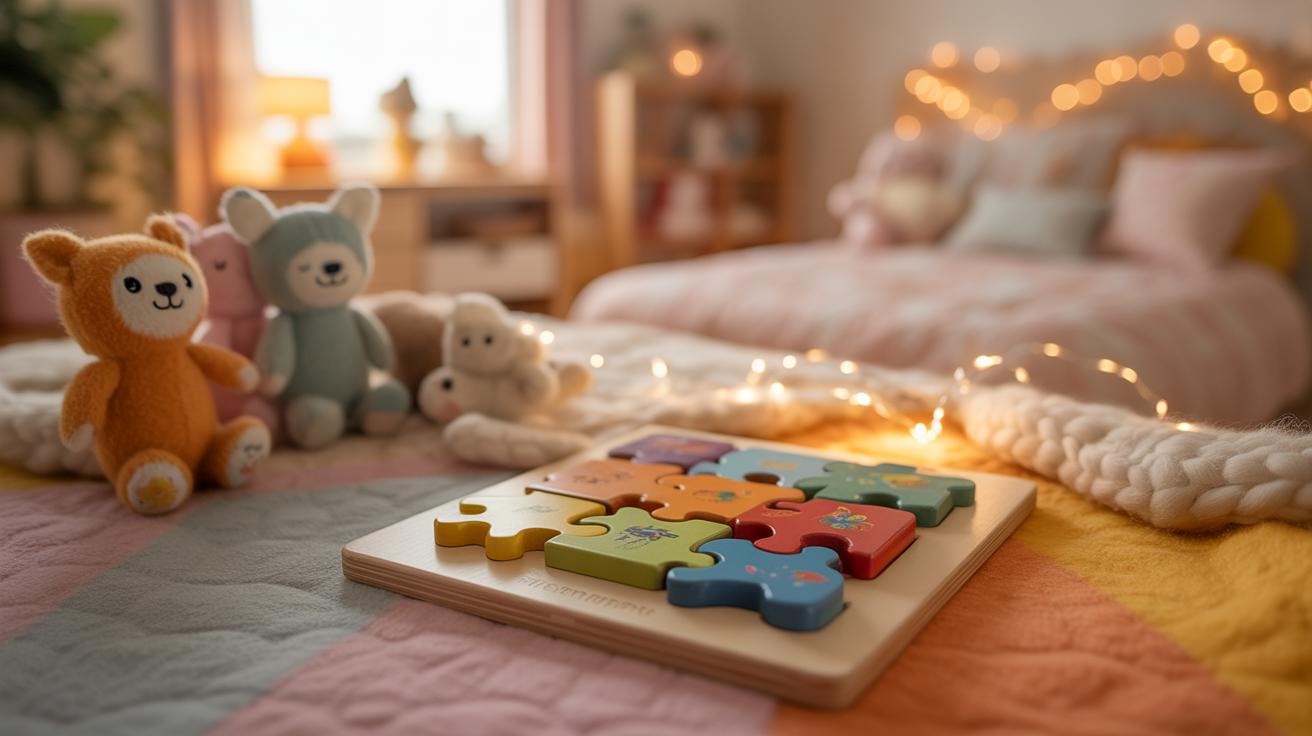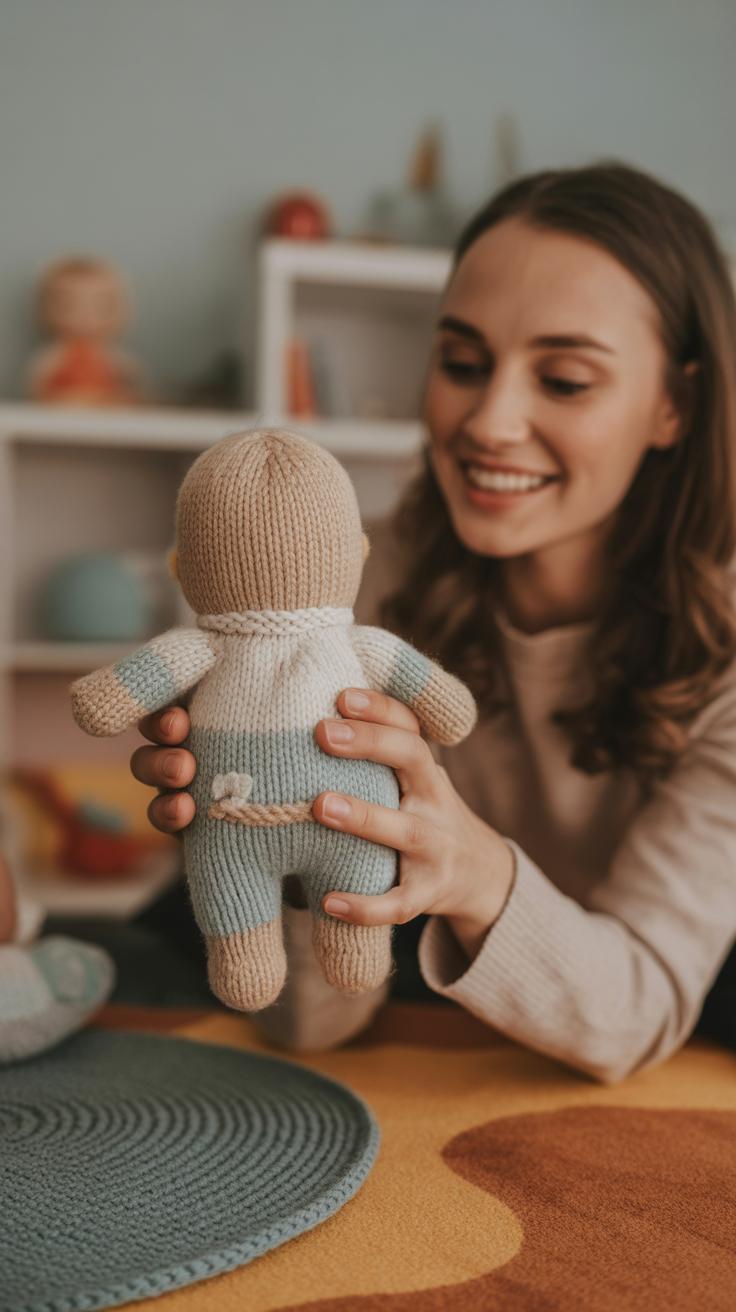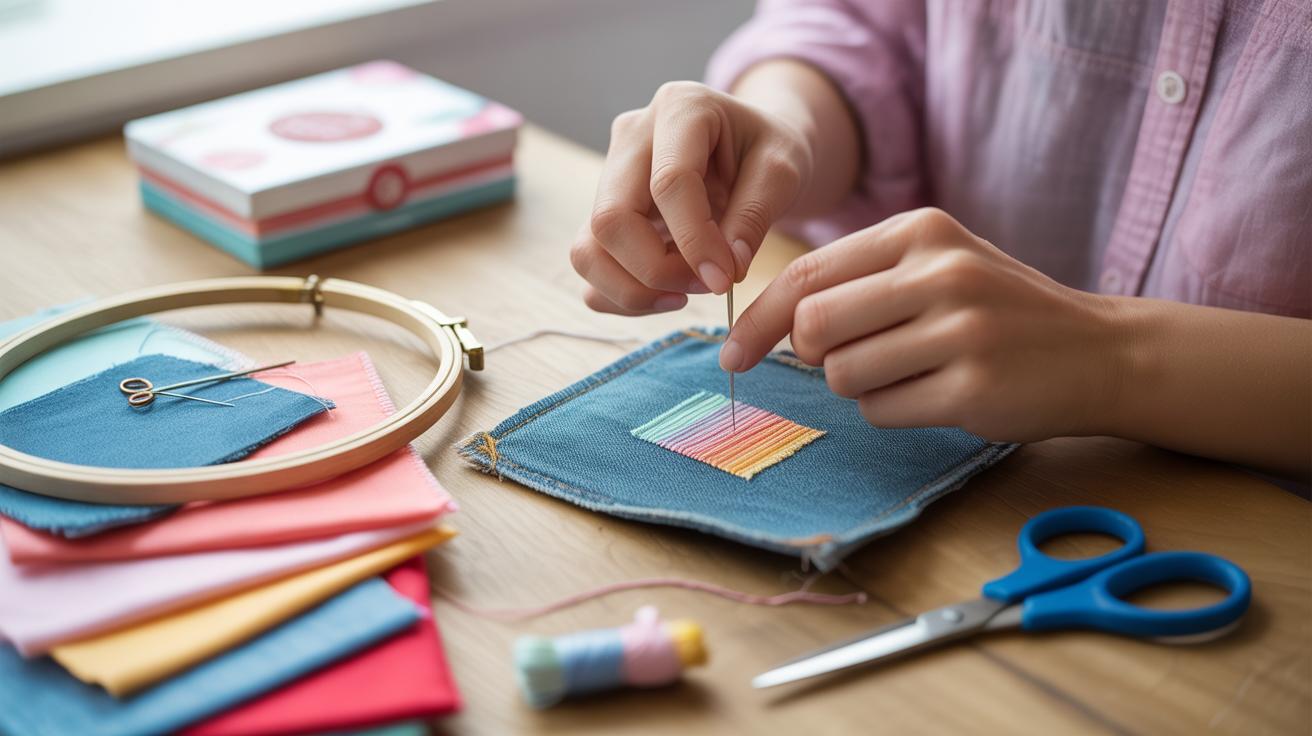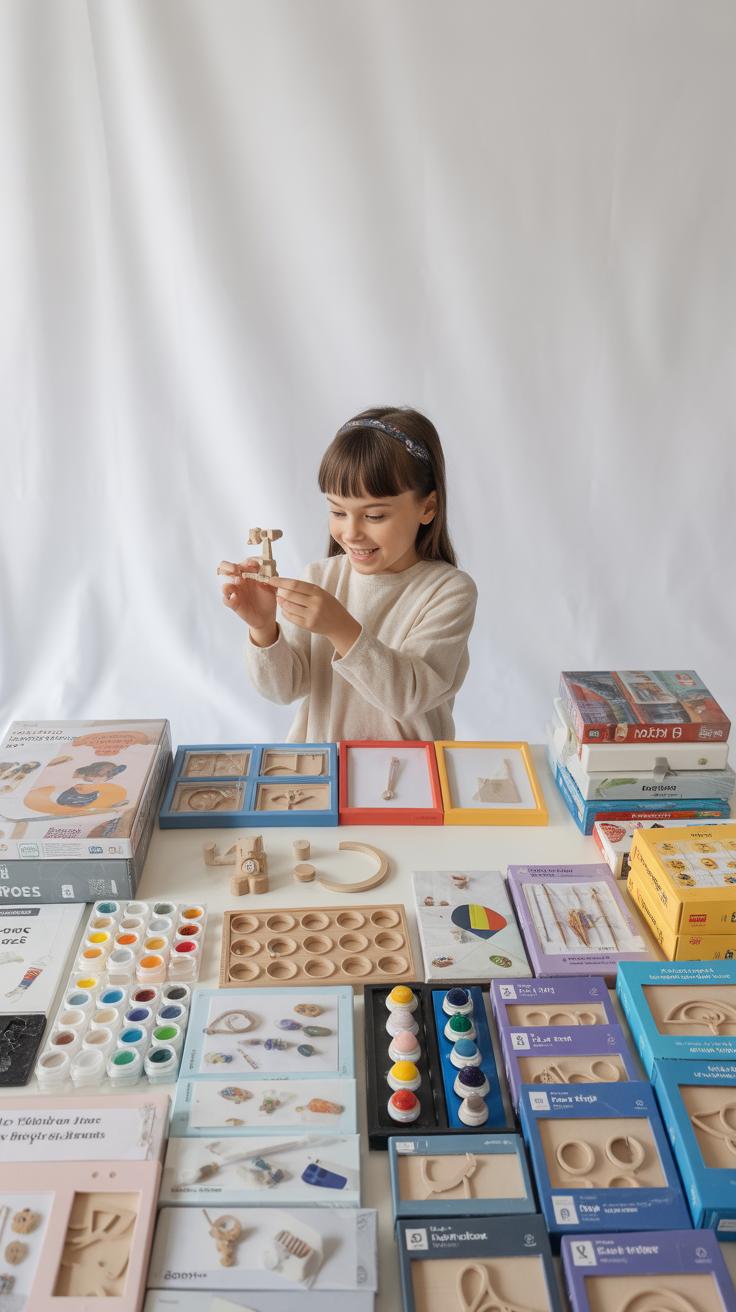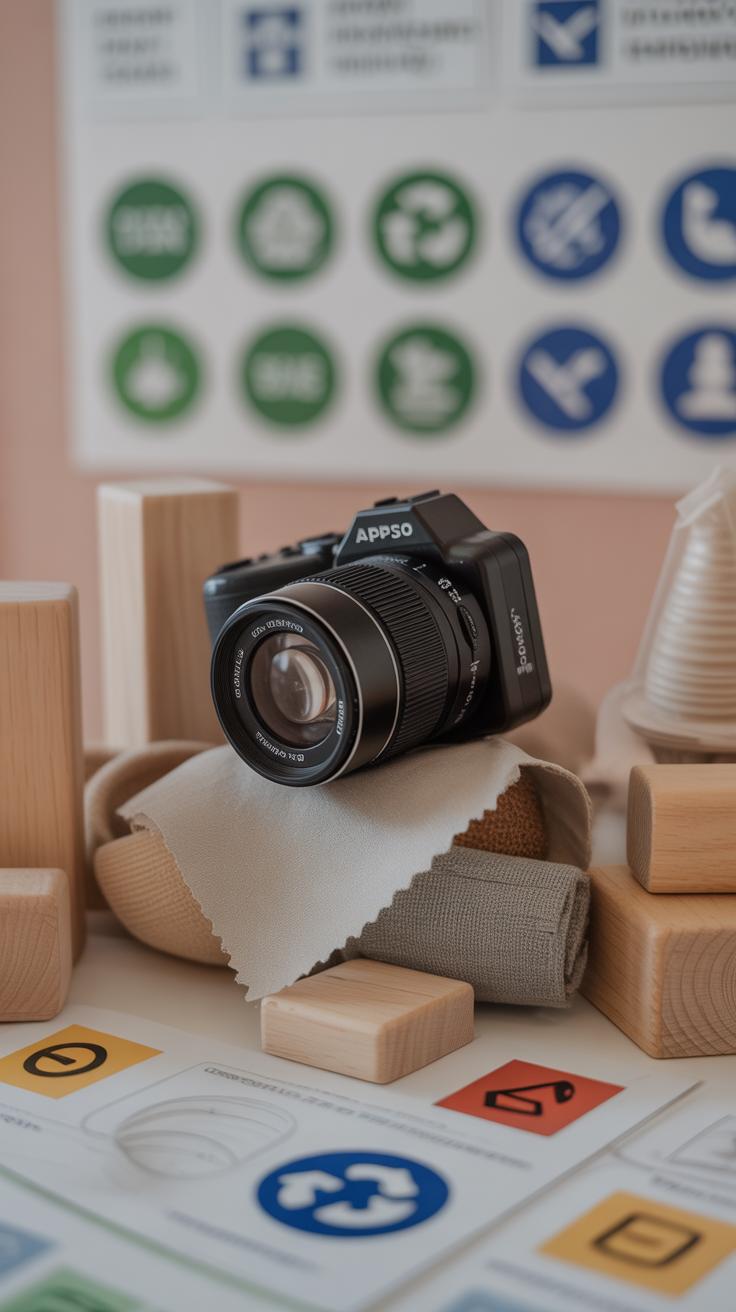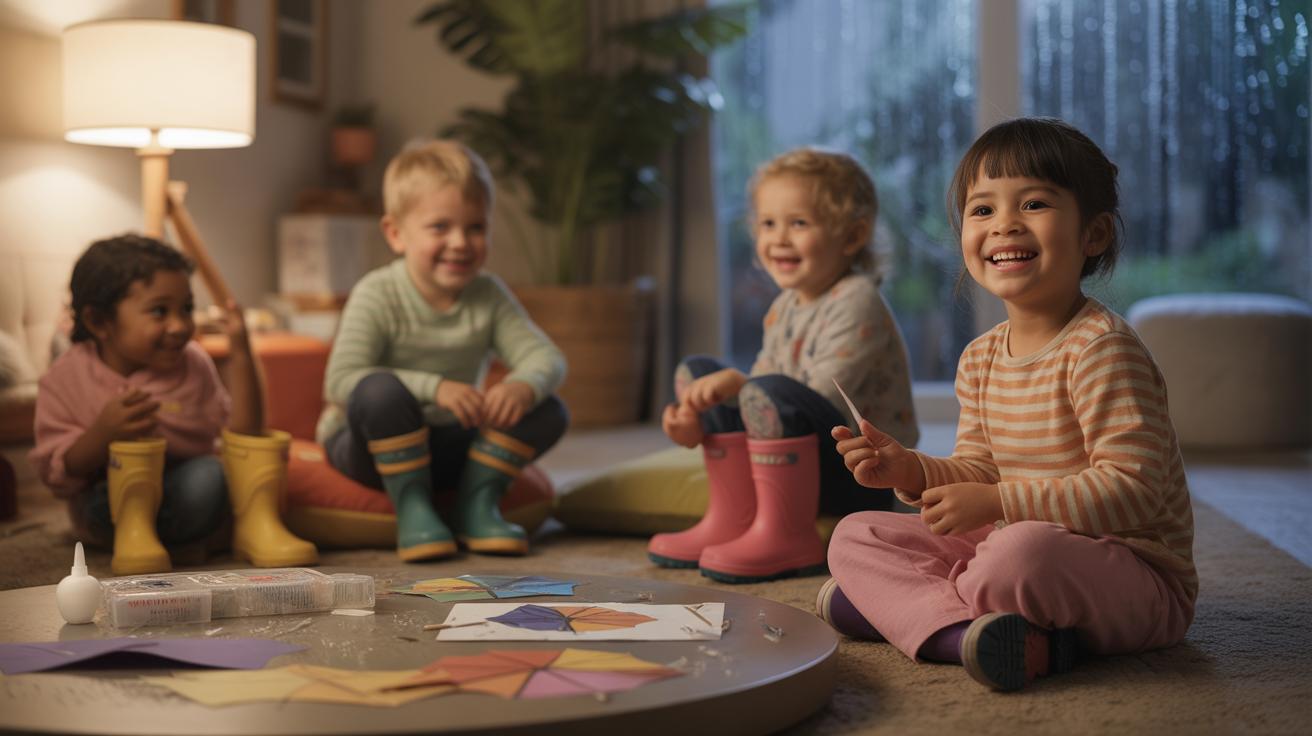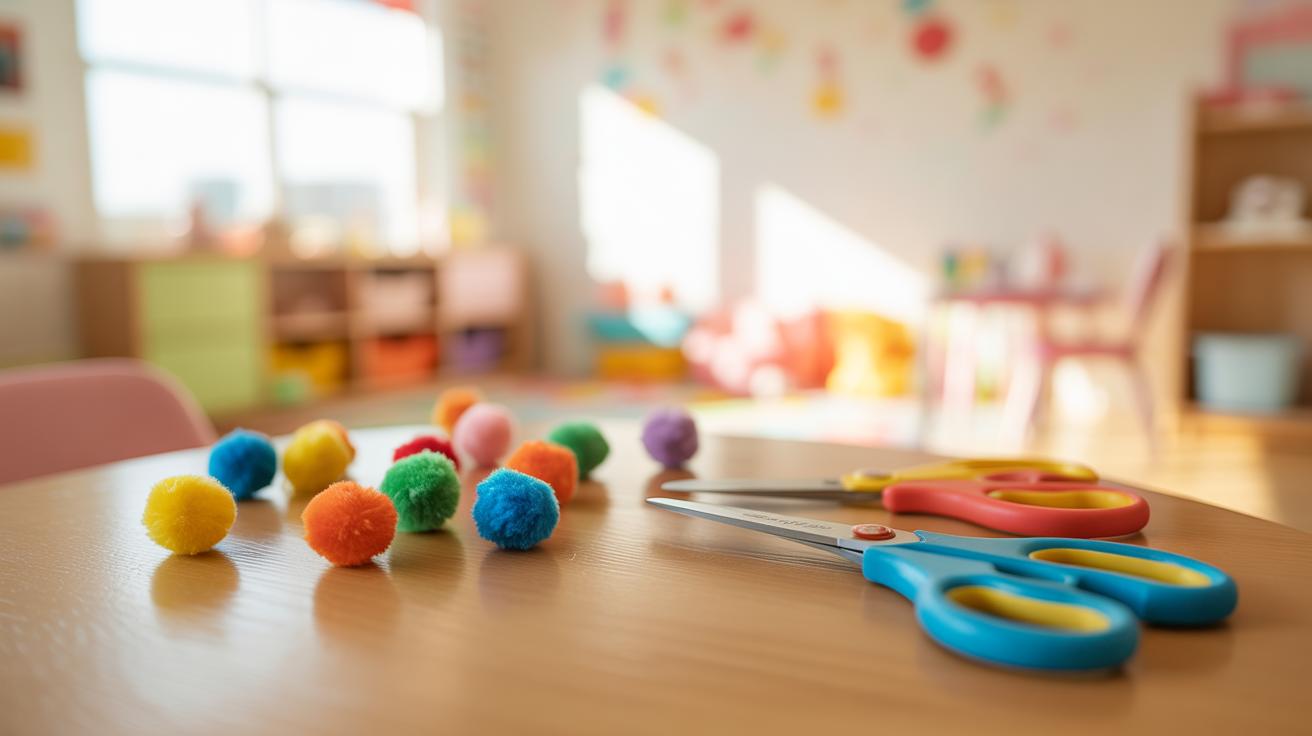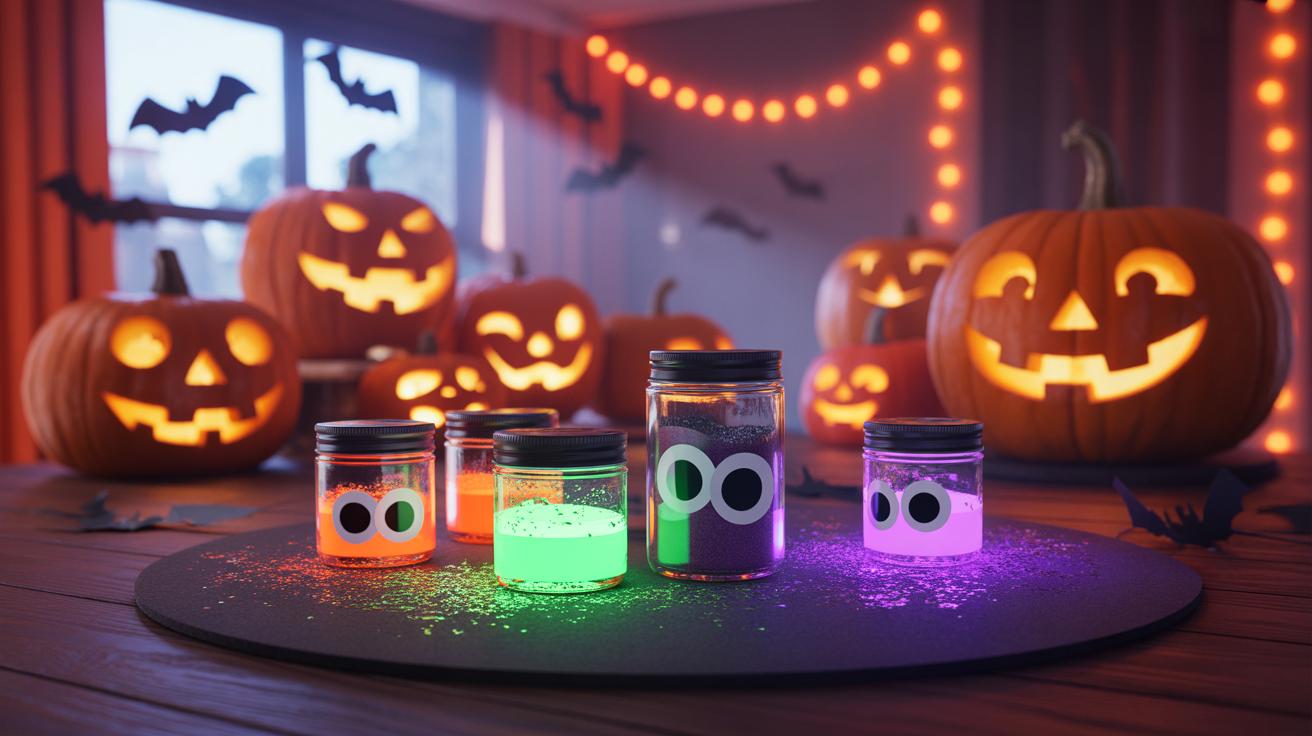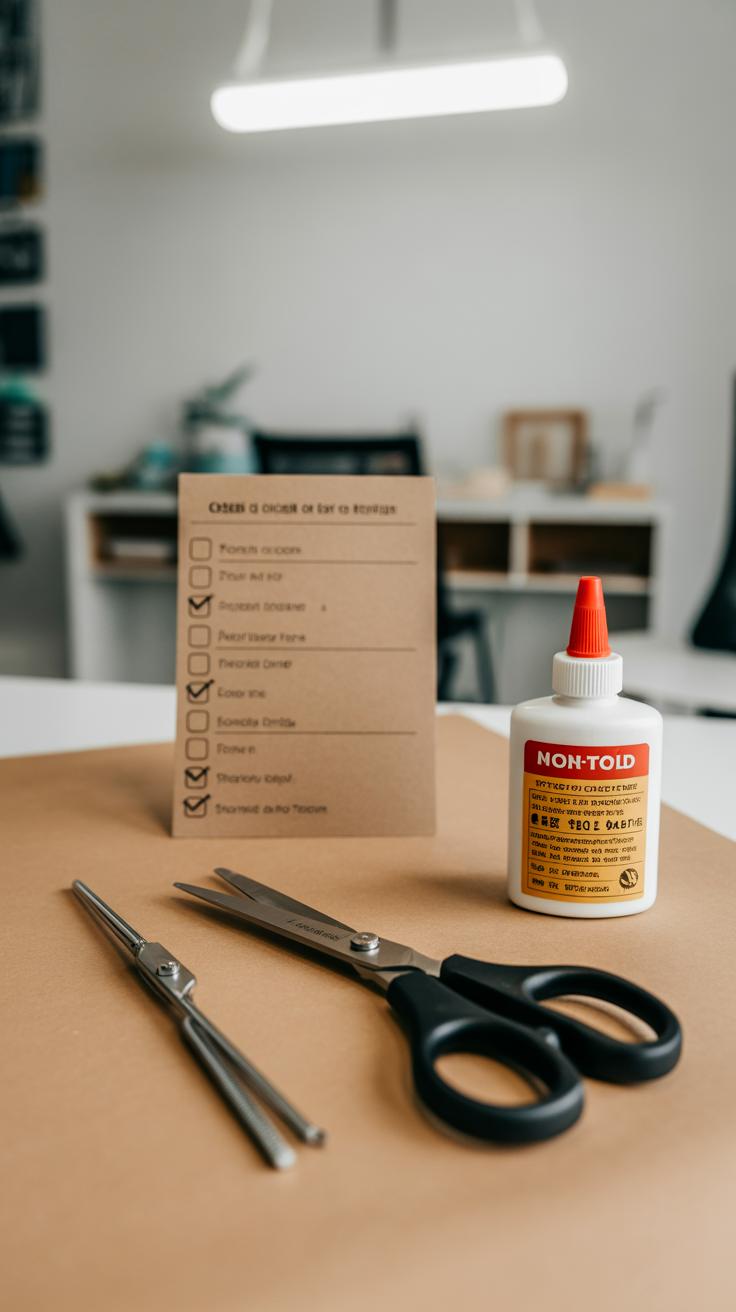Introduction
Handmade gifts for kids offer a unique way to spark their imagination and creativity. These gifts stand out because they are made with care and often tailored to the interests of each child. Unlike mass-produced toys, handmade gifts provide an opportunity for children to explore and create, enhancing their learning and play experiences.
In this article, you will discover the benefits of giving handmade gifts to children. We will explore various DIY gift ideas and show you how these gifts help develop skills and encourage imaginative play. You will learn practical tips and inspiration to create meaningful presents that your kids will treasure and enjoy.
Benefits of Handmade Gifts for Kids
Handmade gifts for children carry a kind of value that’s hard to find in store-bought items. They’re not just objects; they’re experiences, memories, and opportunities wrapped up in one. When a child receives something made by hand, it often sparks a sense of wonder because the gift feels unique and personal — it wasn’t just picked from a shelf but created especially for them.
These gifts encourage creativity in a way that mass-produced toys don’t quite match. Picture a child receiving a simple wooden block puzzle, crafted with care. That puzzle isn’t just a toy; it becomes a tool for problem-solving and inventing stories around the shapes and colors. I’ve often noticed kids turning handmade dolls into characters of their own little worlds or using fabric scraps in games as magical capes or secret maps. There’s something about the open-endedness that fuels imagination.
Beyond creativity, handmade gifts strengthen emotional connections. When you spend time making something, it’s like you’re sending a message — “I thought about you, I care about you.” Children pick up on this, even if they can’t put it into words. The gift becomes a symbol of that bond, a reminder of a person’s love and effort. It might even become a cherished keepsake, passed around stories in the family or quietly tucked away in a special drawer. That personal touch makes handmade presents difficult to forget.
DIY Gift Ideas to Spark Creativity
When you want to give a handmade gift that really fuels a child’s imagination, simple do-it-yourself kits often do the trick better than you might expect. These gifts invite kids to explore their own ideas rather than follow rigid instructions, and that freedom can be quite powerful.
Craft Kits
Personalized craft kits bring together just the right mix of tools and materials tailored to a child’s age and interests. Think about including paints, beads, colored paper, glue, and maybe some felt or yarn. You can even add a little booklet with easy project ideas to get them started, but not one that confines their creativity too much.
Putting together such a kit isn’t complicated. Gather supplies from local craft stores or repurpose things around your home. Pack them in a small box or tote, and maybe include a little note encouraging experimentation. Kids often surprise you by mixing materials in ways you wouldn’t expect, and that kind of play makes them think differently and problem-solve on their own.
Storybook Making Sets
Storybook kits are another way to engage young minds. These typically come with blank books or notebooks, stickers, markers, and prompts to inspire their storytelling. The magic is in letting kids imagine characters, settings, and plots while they practice drawing and writing.
You could put together your own by binding blank pages and throwing in some coloring supplies. Give them some story starters or questions to spark ideas – like “What if animals could talk?” or “Describe a day on another planet.” This kind of gift not only builds literacy skills but encourages a child to express themselves, which sometimes feels difficult but is deeply rewarding.
Have you noticed how kids tend to revisit their storybooks again and again, maybe tweaking details or adding new pages? That ongoing creativity and ownership is part of what makes these gifts worth the time to make.
Materials That Encourage Safe Play
Choosing the right materials for handmade gifts can feel tricky, especially when safety is at stake. Kids tend to put everything in their mouths, so picking natural, non-toxic, and eco-friendly options really matters. Wood, for example, ranks high on my list—it’s sturdy and biodegradable, plus it ages well without breaking down into harmful bits.
Cotton is another good pick. Soft, breathable, and usually free from harsh chemicals, it’s perfect for sensory toys or simple dolls. You might also consider felt or wool, both natural and less likely to cause irritation compared to synthetic fabrics.
When you use natural materials like these, you help protect not just children but also the planet. It’s a bit like killing two birds with one stone, though that phrase feels off here—anyway, you get the idea.
On the flip side, steer clear of plastics that release BPA or phthalates. Formaldehyde in some finishes is another red flag. When picking paints or finishes, look for water-based, non-toxic varieties labeled safe for kids. Some simple, natural oils like beeswax or plant-based sealers can finish wooden toys nicely without the chemical baggage.
Do you ever wonder if an eco-friendly toy really lasts as long as plastic ones? Sometimes, natural items need a bit more care, but that’s part of their charm—and your chance to teach kids about respecting their stuff.
Educational Value of Handmade Gifts
Handmade gifts often carry more than just a personal touch; they can also foster learning in subtle but meaningful ways. When you choose a handmade puzzle or a set of building blocks, you’re not just giving a toy—you’re offering a challenge that encourages problem solving and critical thinking. Kids have to figure out how pieces fit or how structures balance. It’s a quiet but powerful exercise for their minds.
Fine motor skills develop naturally when children manipulate small parts, like threading beads or stacking shapes. These activities improve hand-eye coordination, which feeds into everyday tasks—from writing to buttoning a shirt. I’ve noticed, though, that kids sometimes get frustrated if the challenge feels too hard. So balancing difficulty is key to keep them engaged without overwhelming.
Encouraging Skill Development
Puzzles, blocks, and similar toys push cognitive skills because they require attention, memory, and spatial reasoning. Kids learn cause and effect, timing, and sequencing. Physically, these gifts demand dexterity and precise movements. For example:
- Sorting shapes or colors refines categorization skills.
- Building towers strengthens grip and coordination.
- Figuring out patterns exercises logical thinking.
Sometimes, a simple block set becomes a complex experiment in balance and creativity. That’s where imagination meets skill, without adult instructions crowding the process.
Supporting Emotional Intelligence
Gifts designed for role play do more than entertain—they offer a way for children to explore emotions and social dynamics. Dolls, puppets, or miniature kitchens encourage kids to act out scenarios, helping them understand feelings like empathy, joy, or frustration. Watching my niece play doctor with her stuffed animals showed me how she practiced kindness and care, skills that can be hard to teach otherwise.
These play moments can also highlight social cues, like sharing, taking turns, and negotiating roles. Of course, some kids shy away from role play initially, so offering a variety of options lets them find their comfort zone and grow at their own pace. When kids feel understood and emotionally connected through play, they start to develop deeper awareness—not just of others, but of themselves, too.
Involving Kids in Gift Making
Creating gifts with children does more than just produce a present; it quietly boosts their confidence and makes them feel involved in something meaningful. When kids see their ideas take shape, they sense pride and ownership. For younger children, simple crafts like decorating picture frames or making friendship bracelets work well. Older kids might enjoy assembling custom jars filled with treats or painting small wooden objects. You might wonder, can a four-year-old really make a gift? Yes, if the task matches their skill level—simple gluing, coloring, or choosing materials can be enough.
Certain projects are perfect for doing together. For example, baking cookies and decorating them side by side not only results in a tasty gift but also encourages teamwork. Parents and kids collaborate by sharing ideas, solving minor problems like how to arrange decorations, or even selecting the packaging. This kind of joint effort often sparks conversations and laughter, strengthening bonds in ways few activities match.
On the other hand, encouraging kids to take charge of a project independently helps them develop a sense of responsibility. Consider crafts requiring minimal adult help, like assembling bead necklaces or creating a small scrapbook. These tasks let children express themselves freely and make choices without constant guidance. It’s interesting how some kids surprise adults by tackling these “independent” projects with more patience than expected, though others may ask for help here and there. Either way, the process itself fuels their creativity and self-esteem.
Personalized Gifts That Reflect Interests
Creating gifts that match a child’s hobbies or favorite things makes a present feel… well, more like it truly belongs to them. Gift-giving gets a whole new meaning when you add those personal touches. For instance, imagine a paint set with their name on it or a sketchbook in their favorite color—it’s subtle, but it lets the child know someone really thought about what they enjoy.
Some ideas to explore:
- Custom art supplies like markers or brushes labeled with a kid’s name or a character they like. It turns everyday tools into something special and sparks pride when they use their own kit.
- Themed craft kits tied to passions, say a space explorer’s box with glow-in-the-dark stars and rocket stamps, or a fantasy world pack full of dragon stickers, colored pencils, and story prompts.
- Personal touches don’t need to be complicated or costly—simply choosing colors or images that relate to a child’s interests can make even simple gifts memorable.
When you tailor gifts this way, you’re not just handing something over—you’re showing, “I see what you like.” That connection matters. But does that mean personalized is always better? Maybe not. Sometimes the surprise of something unrelated sparks new curiosities. Still, gifts that mirror a child’s world tend to hold their attention longer and invite more play or creativity.
Encouraging Imaginative Play With Handmade Toys
Puppets and Dress-Up Items
Handmade puppets can be a surprisingly powerful way to invite kids into storytelling. When a child holds a puppet they helped create—or even just one made by hand—it feels different. There’s a connection, almost like the puppet is theirs in a unique way. These simple characters push children to invent voices, emotions, and entire dialogues. Puppets aren’t just toys; they become actors in small, unfolding dramas that kids direct themselves.
Dress-up items follow a similar path. A handmade cape or mask sparks role-playing. Kids try on different identities, testing out how it feels to be a pirate, a prince, or something entirely made-up. When the costume piece isn’t just bought off a shelf, but crafted thoughtfully, it carries a little more magic, or at least that’s what I’ve noticed watching kids at play.
Building Your Own Play Worlds
Beyond puppets and costumes, many children use very simple handmade items to build worlds from scratch. Think of little houses carved from wood scraps or castles made of fabric squares pinned together. These objects don’t offer finished experiences. Instead, they serve as blank canvases for stories waiting to happen.
There’s usually a mix of intentional design and accidental creativity here. A stick becomes a sword or the roof of a cottage depending on the day or mood. These homemade playsets ask kids to fill in the details themselves—deciding who lives there, what adventures take place, and why.
Watching this kind of play raises questions: Does the child’s imagination expand more with a looser, handmade item rather than a detailed, pre-made toy? Perhaps. It seems the less defined the object, the more room there is for stories to grow—and isn’t that really what imaginative play is about?
EcoFriendly Gifts for Conscious Choices
Choosing sustainable gifts feels like a small but meaningful step. Kids can learn so much from something as simple as a present made from recycled or natural materials. It’s not just about reducing waste, but about sparking an awareness of how our choices ripple through the environment.
Gifts from Recycled Materials
There’s a surprising variety when it comes to gifts crafted from recycled paper, fabric, or wood. Think about notebooks with covers made from scrap paper, or soft toys sewn from leftover fabric scraps. Wooden puzzles carved from reclaimed wood also make great gifts—solid, tactile, and kind to the planet.
In one recent swap I attended, a handmade doll made entirely of vintage fabric caught everyone’s attention. It wasn’t perfect, but its story—how worn cloth got a second life—felt more valuable than a shiny new toy. Such gifts embrace imperfections, just like nature.
Promoting Environmental Awareness
When kids receive something eco-friendly, it often raises questions. “Why is this toy all paper?” or “Why does this doll have patches?” These moments can lead to conversations about waste and care for the Earth, turning gifts into lessons.
Plus, creating or using these gifts encourages respect for resources. It prompts kids to think twice before discarding things or buying new. Maybe the next craft project will reuse materials at home. Maybe kids grow a little more patient, appreciative, aware. That’s the kind of gift that lasts.
Safety Tips for Handmade Gifts
When making gifts for kids, safety can’t be an afterthought. You want the toy or craft to last—and to be safe. One key is size. Small parts can be dangerous, especially for younger children. Try to keep pieces larger than a child’s mouth to avoid choking hazards. It’s not always straightforward; something that seems safe for an older kid might not be for a toddler.
Think about how sturdy the parts are. Loose bits or fragile pieces risk breaking off during play. A gift that falls apart the moment it’s picked up isn’t just disappointing—it can be unsafe.
Finishes matter too. Using water-based, non-toxic paints or stains reduces the chance of toxicity. I’ve seen bright colors made from old solvents, which seemed creative but felt risky. It’s better to choose products tested for children’s items, even if it means limited color choices.
Here’s a quick checklist you might want to run through:
- Are all parts larger than 1.25 inches in diameter to prevent choking?
- Are joints and attachments secure and resistant to pulling or twisting?
- Did you use water-based, non-toxic paints or stains, avoiding chemical smells?
- Have you tested the gift under some rough play to see if anything loosens?
While it can feel tedious, these steps could prevent serious accidents. Remember, safety doesn’t have to mean dull. It just means thinking a bit more about how kids interact with their toys.
Where to Find Handmade Gift Supplies and Inspiration
Finding the right materials for handmade gifts can feel like a little adventure, especially when you want something safe and eco-friendly for kids. Local craft stores are an obvious spot, but they often hold little surprises—like natural fabric scraps, non-toxic paints, or untreated wooden blocks—that you might not immediately think to look for. Some stores even have dedicated sections for children’s crafts, making it easier to pick items that won’t cause trouble later.
Online shops also offer a treasure trove of eco-conscious supplies. Websites like Etsy or specialty craft retailers feature reusable, organic, or recycled materials with detailed descriptions, which helps when you want to avoid anything questionable. Sometimes ordering in bulk from these sources saves both money and packaging waste.
Besides buying supplies, you may wonder where to turn for fresh ideas. I often find myself flipping through creative community groups on Facebook or browsing Pinterest boards specifically about handmade children’s gifts. Books about DIY toys and crafts can be surprisingly timeless. Even Instagram accounts run by crafty parents or teachers provide quick bursts of inspiration—though not every idea translates easily into a safe homemade gift.
It might help to ask yourself: where do you get creative sparks? Sometimes the best ideas come from mixing a few different sources, and your local library or community center may offer workshops or kits that spark something unique. Don’t overlook neighbors or parent groups, either—they can be a good source of shared knowledge and materials.
Conclusions
Handmade gifts for kids enrich their playtime and learning by offering creative and personalized experiences. These gifts encourage children to use their imagination and develop their cognitive and motor skills in a fun, engaging way. Choosing handmade gifts shows thoughtfulness and supports meaningful connections between giver and receiver.
By making your own gifts or selecting carefully crafted items, you provide children with tools for discovery and expression. You can create lasting memories and foster a love of creativity that benefits kids throughout their growth. Consider handmade gifts as a powerful way to inspire and delight the young minds in your life.

